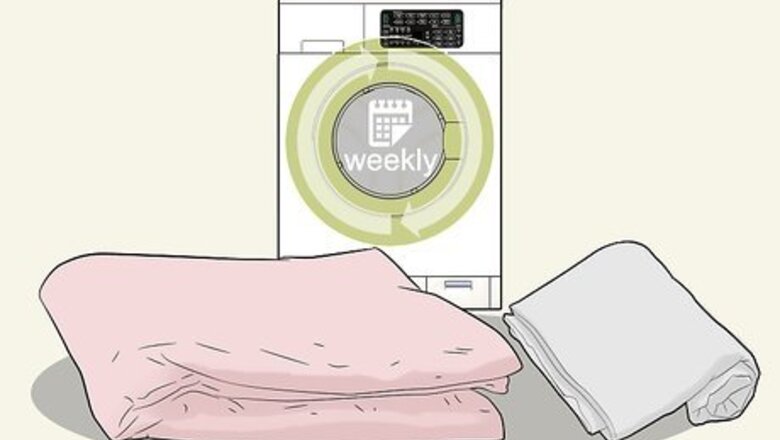
views
Cleaning Sheets and Pillowcases
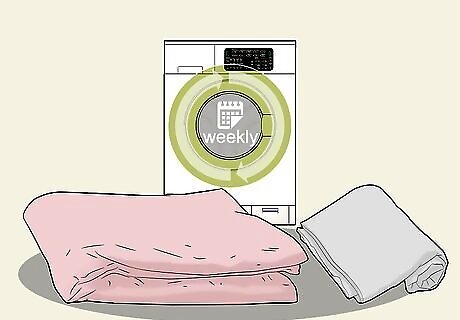
Wash your sheets and pillowcases at least once a week. Because you spend such a big portion of your life using your sheets and pillowcases, they get dirty fairly quickly. Washing them once a week gets rid of any dirt, dead skin, makeup, and other things that need to be removed so you have clean bedding.
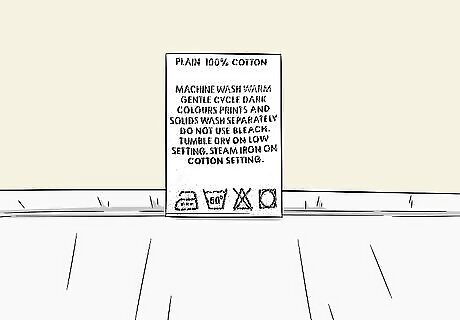
Read the care label to check for important instructions. Most cotton sheets can be washed on any cycle or water temperature, but it’s best to look at the care label attached to your sheets just to be sure. Look for specific instructions for which cycle to use, what water temperature is safest, and whether they can be washed with other things. If your cotton or microfiber sheets don’t have a care label, it’s likely safe to wash them on a normal cycle with cool or warm water.
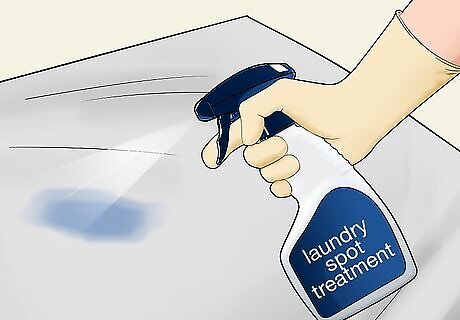
Treat any stains using a pre-treatment safe for your sheets. Spray a stain treatment onto specific areas of your sheets you’d like to clean, leaving the treatment on the fabric to soak in. If you have white sheets that are stained or need to be lightened, you can use bleach for these. Look for a laundry spot treatment at your local big box or grocery store. OxiClean is a popular option for getting rid of stains, or you can opt for a more gentle stain remover like distilled white vinegar or baking soda.
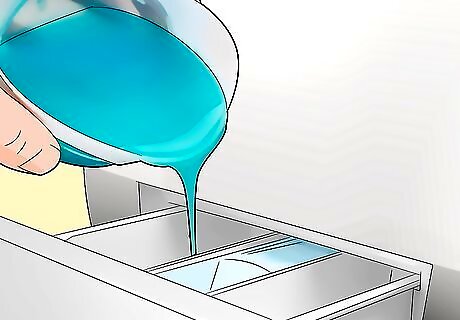
Add detergent to the washing machine after measuring it out. Use the cap to measure your laundry detergent if it’s a liquid, or use one detergent pod. Place the detergent in the detergent dispenser if your washing machine has one. Otherwise, add the detergent directly to the washer. Read the instructions on your detergent pod pack to be sure you’re using them correctly. It’s said to be best to add the detergent to your washing machine before you add your load of laundry if you’re putting it directly into the washer drum (this is true for pods as well). Choose a mild detergent like The Laundress or Caldrea.
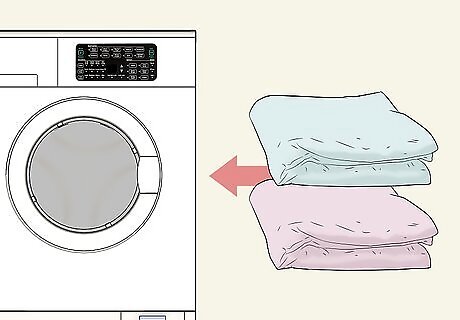
Place one or two sets of sheets in the washing machine. Sheets need lots of room to get fully clean, so avoid cramming the washing machine full of sheets to the point where they can’t move around. If you have a large washing machine, you can likely place two sets of sheets in there. If your washer isn’t super big, it’s best to just add one set. Never wrap your sheets around the agitator (the spindle that sticks up in the middle of the washing machine). It could cause them to tear. Wash sheets separately from other items like clothing so that they don’t get tangled in each other.
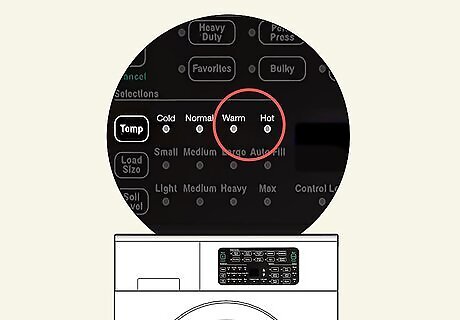
Use hot or warm water to sanitize your sheets. If you’ve been sick recently, use hot water to kill any germs as you’re washing the sheets. If you’re just trying to remove dirt, you can wash the sheets on a regular warm cycle. It’s a good idea to use a hot cycle during cold and flu season.
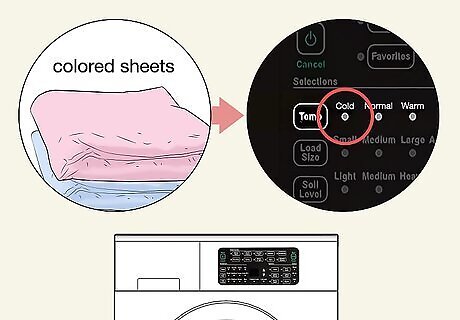
Set the washer to cool water to wash colored sheets. Cool water is the safest setting for most sheets, and it still cleans them very thoroughly. Set the washer to cold or cool water to keep your sheets from fading while preserving energy. Using hot water takes much more energy than using cold water, making it more energy-efficient.
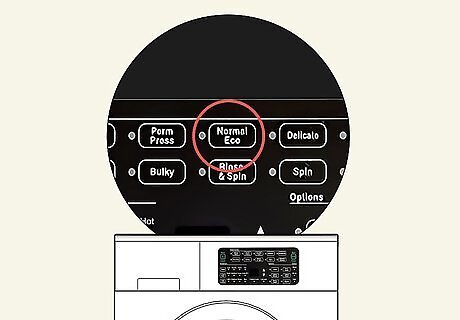
Select the “Sheets” cycle if possible, or a normal setting. If your washing machine is a newer model, it likely has a “Sheets” setting designed specifically for washing your sheets safely. If not, select “Normal” or “Casual” as your wash setting. Avoid using “Heavy Duty” as this setting tends to be rough on your sheets.
Washing Comforters, Blankets, and Duvet Covers
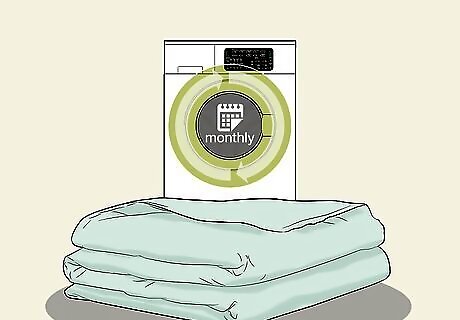
Wash duvet covers once a month and other items a few times a year. Duvet covers are often easy to clean and come into contact with skin more than comforters and blankets. Plan on taking off your duvet cover and washing it once every month. Wash things like comforters and blankets a few times a year, depending on how dirty they are. If you use certain blankets very often, it’s best to wash them more than a few times a year.
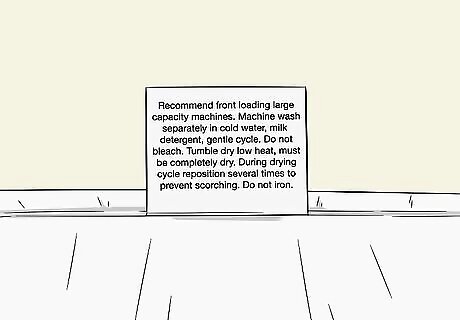
Check the care label before putting them in the washer. Your comforter or other piece of bedding will have a care label telling you exactly how to wash and dry the item. Read the label carefully to be sure you’re washing it correctly and safely. Follow the specific instructions on the label, such as hand washing the item or only putting it in cold water. Some materials like wool or silk shouldn’t go in the washer to avoid getting damaged. If your item says it needs to be professionally cleaned, follow these instructions to avoid messing up your bedding.
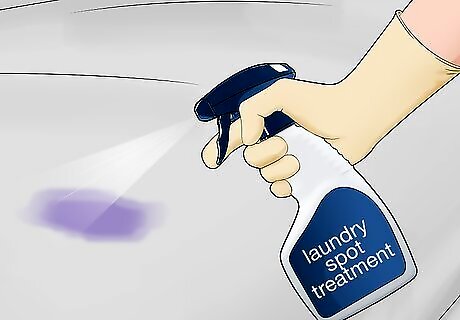
Treat any stains you see before washing the item. Spray a spot treatment on your duvet cover, blanket, or comforter. If your item has filling in it, move the filling away with your fingers before spraying the stain treatment on the dirty spot. Leave the stain treatment on the item as you wash it. Use a natural spot treatment like baking soda or lemon juice, or purchase a gentle laundry stain remover from a big box store.
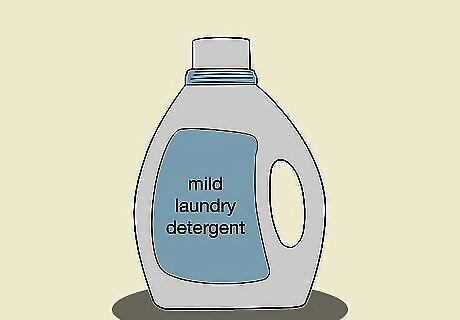
Pick out a mild or natural laundry detergent to use. Since things like duvet covers and comforters tend to be more delicate, it’s best to use a detergent made with mild or natural ingredients so you don’t damage the bedding. Visit your local big box store or grocery store to find a mild detergent right for your bedding. Look for detergents that are organic or say they’re best for sensitive skin. Some popular options include Mrs. Meyer's Laundry Detergent or Seventh Generation Natural Laundry Detergent.
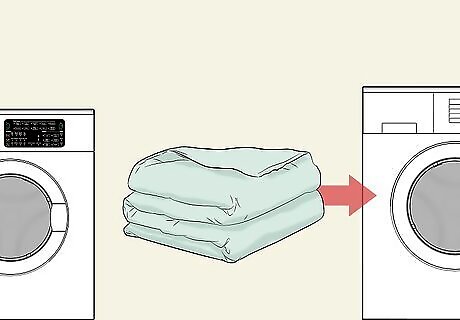
Use a washing machine that’s big enough to fit your bedding item. Blankets, duvet covers, and especially comforters take up a lot of space in the washing machine. If your washer isn’t big enough to fit these items, don’t try to cram them in. Instead, visit a local laundromat to use one of their industrial-sized washers. If you cram your large bedding item into the washer and there isn’t enough space, it’s not going to get clean.
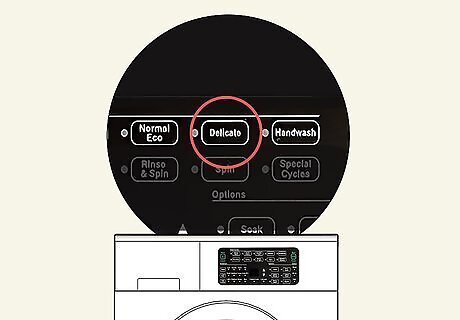
Set the washing machine to the delicate cycle using cold or warm water. Using a gentle or delicate cycle will help make sure your bedding isn’t damaged. Set the washer to cold or warm water, depending on your preferences and what the care label on your item said. Using warm, cool, or cold water will protect the fabrics and colors of your item.
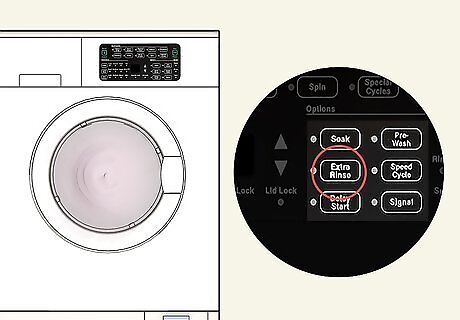
Put the items through an extra rinse cycle after they’re done washing. Since these items are so large, it can be difficult to get all the soap out with just one cycle. Once the wash cycle has finished, set the washer to a rinse cycle to wash out any extra soap, ensuring your blanket, comforter, or duvet cover is super clean. Keep the extra rinse cycle on a cold or cool water setting.
Drying Your Bedding
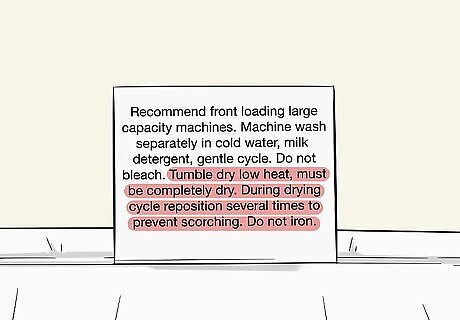
Follow the care instructions for drying your bedding. Just as you check the labels before washing your items, it’s even more important to check what they say about drying them. Certain heat levels aren’t safe for different fabrics, so read the drying instructions carefully.
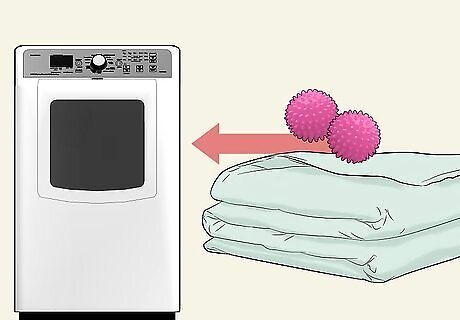
Put your bedding in the dryer with dryer balls to promote even drying. Dryer balls made of wool or rubber are helpful when tossed around in the dryer with your bedding, making sure everything is being dried evenly. Purchase a dryer ball from your local big box store or online. You can also make your own dryer ball by putting a tennis ball in a sock.
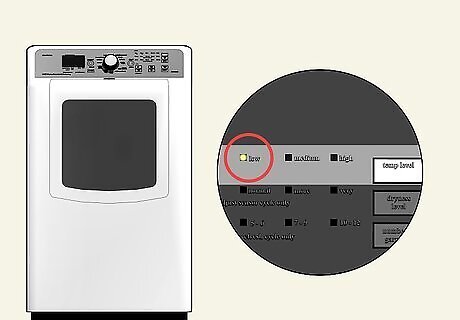
Dry sheets on low heat to avoid damaging them. Sheets often take a long time to dry, causing people to put them on high heat to speed up the process. This actually damages your sheets. Instead, set the heat to a low setting and open up the dryer every 30 minutes or so to see how they’re doing. If they’re still not dry, keep drying them on a low heat setting until they're finished. Over-drying your sheets or drying them using high heat causes them to shrink and wrinkle, as well as damages the sheet’s fibers.
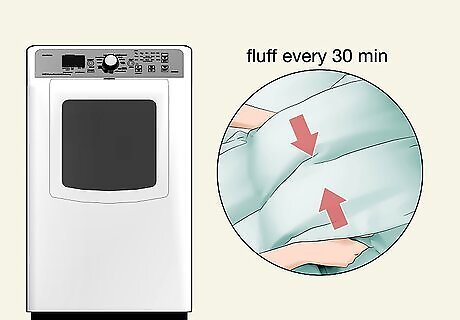
Remove comforters and blankets from the dryer every half hour to fluff them. After following the care label instructions for the right heat and care setting, take your comforters and blankets out of the dryer every 30 minutes. Shake them out and redistribute any filling using your hands before putting them back in the dryer to continue drying. This method helps ensure the items dry evenly.
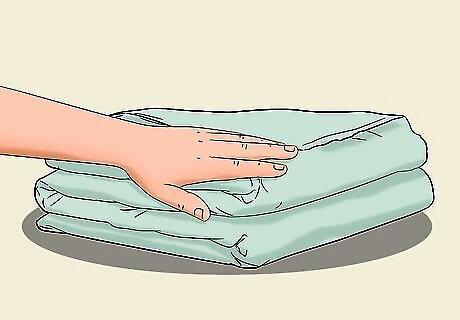
Check that your bedding is completely dry before folding and storing it. Storing damp bedding can cause mildew to form on your sheets, comforters, or other items. Before folding up the bedding and putting it in a linen closet or container, feel every part of the item with your hands to make sure it’s definitely dry. If you want to deodorize the bedding, add ½ a cup of baking soda at the beginning of the wash and ½ a cup of white vinegar during the rinse cycle. You can use steam when ironing to get wrinkles out faster. It works best with cotton and wrinkle-prone fabrics such as linen. Check the item's label to know the correct temperature for ironing.



















Comments
0 comment